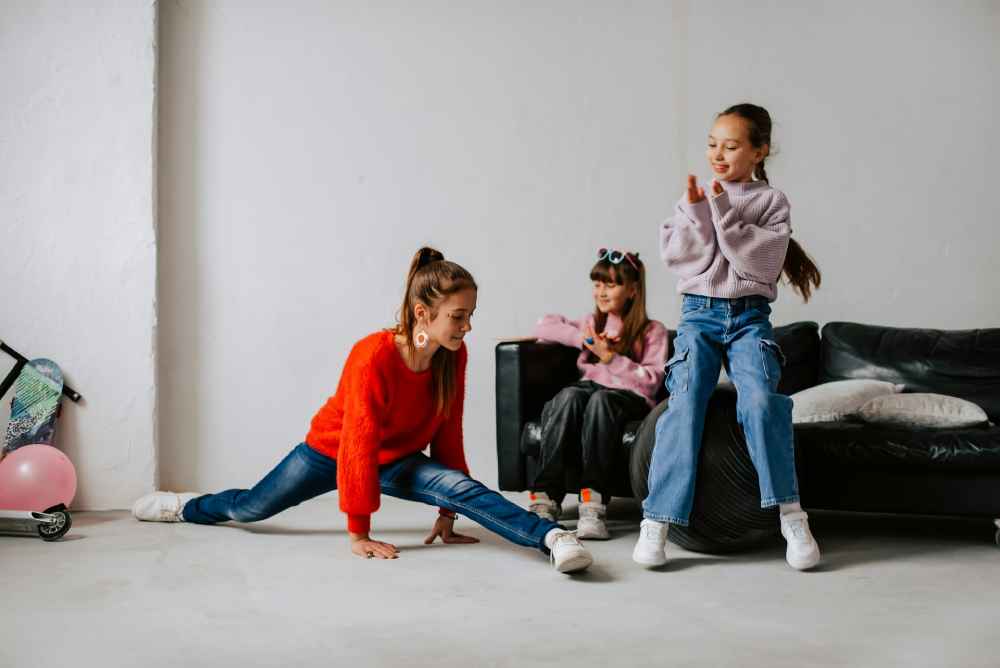Kids’ dance parties are a wonderful blend of excitement, movement, and music that captures the hearts of children and adults alike. These lively events are not only about having a good time but also about enriching the lives of young participants in numerous ways.
Dance parties can transform any space into a lively environment of laughter, creativity, and interaction. Whether hosted at home, in a community center, or even outdoors, they provide a flexible platform where children can explore rhythm and movement without the constraints of formal settings. The benefits of such events extend far beyond the duration of the party, laying the groundwork for a healthier lifestyle and improved social connections among children.
Contents
Physical Benefits of Dancing
Engaging in dance is a dynamic form of exercise that brings various physical benefits crucial to healthy child development. Not only does it boost cardiovascular health by encouraging heart-pumping movement, but it also enhances flexibility and muscle strength.
According to the BBC, activities like dancing are integral to maintaining a good fitness level in children, helping to reduce the risk of developing health issues linked to a sedentary lifestyle. Moreover, these benefits are delivered in the guise of fun, making exercise enjoyable rather than mundane.
As more parents and educators recognize the multiple benefits of dance, incorporating dance party classes for kids has become a popular choice for birthday celebrations, community events, and school activities, offering structured and engaging entertainment that every child can enjoy.
By integrating dance into their lives, children also improve their coordination and spatial awareness, skills that are beneficial in other physical activities and daily life tasks. Dancing supports the development of a child’s posture and balance, contributing to better overall physical health and reducing the likelihood of injury in other activities. This holistic form of exercise is adaptable, too, meaning regardless of a child’s ability or confidence level, there’s always an opportunity to participate and benefit.
Social Skills and Interaction
Dance parties provide a unique arena for social interaction, a vital component of a child’s growth. As children participate in dance, they learn to collaborate, share space, and communicate effectively. These skills are crucial in forming friendships, an essential aspect of social development. The dance floor becomes a microcosm of the larger world, where children practice taking turns, expressing themselves, and responding to the actions of others around them.
The environment of a dance party is often one of support and encouragement, fostering an atmosphere where children feel safe to express themselves. This builds self-esteem and confidence, making it easier for them to form positive relationships outside the dance setting.
Communication extends beyond words in dance; through movements, children learn to express emotions and intentions, which can lead to a deeper understanding of non-verbal cues, enhancing empathy and social intelligence.
Cognitive and Emotional Development
Dancing isn’t just a physical exercise but a powerful tool for cognitive and emotional development. Learning and performing dance routines engage children’s memory and concentration, improving their academic capabilities.
The rhythmic patterns and sequences in dance help enhance brain function, fostering a range of cognitive skills essential for learning. Emotional expression, available through dance, allows children to process their feelings constructively, which can be especially beneficial for those struggling to articulate emotions through words.
As Psychology Today discusses, dance’s storytelling aspect encourages creative thinking and problem-solving abilities. Engaging in creative activities like dance challenges children’s brains to think outside the box and builds resilience and flexibility that can benefit academic settings and personal lives. This creative outlet can be vital for children, offering a safe space to express fears, hopes, and aspirations through movement rather than verbal articulation.
Incorporating Dance in Everyday Life
Bringing dance into everyday life doesn’t have to be complicated or time-consuming. Simple solutions like short dance breaks during homework or chore sessions can generate enthusiasm and provide a fun diversion.
These small moments of joy and movement can improve moods and energy levels throughout the day. Educational institutions and community groups can similarly integrate dance into their offerings, providing regular opportunities for children to engage in this critical activity.
This consistent exposure to dance helps instill a lifelong love of physical activity, making children more likely to maintain a healthy lifestyle as they grow. It also brings families together; organizing a family dance night can foster bonds and create memories that children will cherish. Parents and educators can help ensure children prioritize physical activity as they transition into adulthood by demonstrating the importance of dance and movement from a young age.
Fun Themes and Ideas for Dance Parties
Creating a themed dance party can transform a typical gathering into an engaging event that sparks imagination and excitement. Themes add fun, inspiring children to get involved and express themselves. Popular themes might include “Under the Sea,” where kids dress as their favorite marine creatures, or a “Superhero Dance Off,” that encourages participants to embody their favorite heroes’ moves and traits.
Such creativity in décor and costume invites children to delve into a fantasy world, boosting enthusiasm and participation. Simple additions like themed lights or a photo booth can add to the excitement and offer memorabilia for guests to remember the event. These themes act as catalysts for creativity and allow participants to see dance as a movement and a form of art that connects music, imagination, and storytelling.
Popular Music Choices for Kids
The proper music selection is crucial to ensuring the success of a dance party. With a well-curated playlist, the atmosphere springs to life, engaging the children and keeping them entertained. It’s important to select age-appropriate songs with infectious rhythms and melodies that invite participation. Tracks from popular kids’ movies or contemporary hits with positive messages are always a good choice.
Remixed versions of classics with a modern twist can introduce children to different types of music, expanding their auditory horizons. Music encourages spontaneity and creativity on the dance floor and in how kids express themselves through movement. The right tunes can make dance seem less like an activity and more like an adventure, inspiring children to explore and enjoy the endless possibilities of movement.
Conclusion
Hosting dance parties for kids offers many benefits that extend well beyond just a memorable day. These events promote physical health, enhance emotional well-being, and provide social and cognitive development opportunities.
The diverse nature of dance encourages creativity and adaptability, skill sets that will benefit children throughout their lives. By integrating regular dance activities, either formal or informal, families can inspire a love of movement and self-expression in children, laying the foundational stones for a vibrant and healthy lifestyle.





